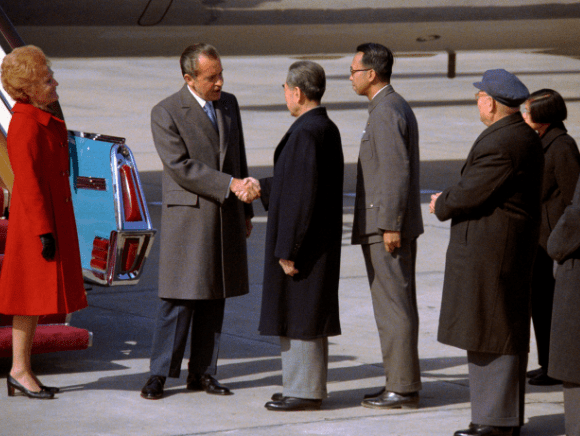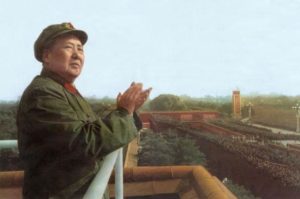Today, China is the world’s second-largest economy, maintaining a gross domestic product north of $14 trillion and a population exceeding one billion. As a result, corporations worldwide clamor to establish a footprint in Beijing, global investors seek lucrative financial opportunities, and politicians everywhere are desperate for the yuan’s attention. But it was not always this way. Following the Second World War, China had come face to face with communism in the form of Maoism, a lethal ideology of collectivization and peasantry. While the Asian powerhouse is still run by the Chinese Communist Party (CCP), conditions are vastly different from half a century ago. And the nation’s rise to economic domination and prosperity began when President Richard Nixon made his landmark visit to the People’s Republic of China.
Nixon and China
The U.S. and China are commemorating a historical event in both nations’ history: President Nixon’s one-week, three-city venture to mainland China, dubbed “the week that changed the world.” After years of diplomatic isolation and economic degradation for the communist country, Nixon executed a critical and strategic move in February 1972 to restart amicable relations with China. Of course, the objective was to garner leverage over the Soviet Union during the Cold War, but it also shifted into an immense economic relationship.
Indeed, the Chinese economy has gone through a metamorphosis over the last 50 years. When Nixon paid a visit to Mao Zedong, the nation was coming off of the Cultural Revolution, the Great Leap Forward, stagflation, and other devastating Maoist endeavors that destroyed the economy and the population. But it was not until after the death of Mao that China, led by Deng Xiaoping, put forward notable market-focused economic reforms.
As part of Deng’s “Four Modernizations” initiative, many significant changes took place in the 1980s and 1990s. China abolished price controls, privatized state-owned industries, removed protectionist trade policies, opened the borders to foreign investment, reopened the Shanghai Stock Exchange, and decollectivized agriculture. The central government also decided to enroll in the World Trade Organization (WTO). These decisions led to an abundance of positive developments. Poverty cratered, average incomes increased, a middle class blossomed, and, up until 2013, an annual growth rate of 9.5% was the norm. The private sector ballooned and then accelerated until the late 1990s.
Once Deng passed away, his successors, Jiang Zemin and Zhu Rongji, continued with reforms. This consisted of slashing tariffs, abolishing trade barriers, cutting inflation, and eliminating many Mao-era welfare schemes. But the market-oriented reforms were halted when Hu Jintao became president, turning to egalitarianism, socialism, subsidies, bubbles, and interventions as new state edicts. Hu’s new vision for China continued when Xi Jinping became head of the CCP, enhancing state ownership and control of private companies by influencing corporate governance.
In the post-pandemic economy, the red dragon is mired in debt and deficits, depending on foreign capital, credit, and the illusion of affluence to sustain the economy. Despite Wall Street’s affinity for Beijing, many experts are seeing the writing on the wall that the 21st century no longer belongs to China as it potentially faces a Lost Decade a la Japan in the 1990s. From property bubbles to a stagflationary economy, Xi is forcing the nation to fall prey to the horrors of socialism and intervention.
Times Change – Or Do They?
Indeed, China has embraced state capitalism as the chief model for the country. Despite its enormous wealth, the central government and the People’s Bank of China (PBoC) possess strict control over the business community, from mom-and-pop shops to multinational goliaths. Every lever is pulled, every string is tugged, and every button is pressed by a little man behind the curtain. Chinese entrepreneurs are shopkeepers while dying companies are eventually transformed into zombies depending on state assistance to survive. Prior to his death, President Nixon pondered if the U.S. and China could sustain their relationship as time went on. Be it a so-called new Cold War or multiple trade disputes, relations between the two superpowers are fractured, but the two sides attempt to remain cordial because of the trillions of dollars and yuan at stake.
Fifty years ago, China could barely feed its people. A half-century later, Beijing is buying American debt, building a 100-plus nation infrastructure campaign in the Belt and Road Initiative, and making the world beholden to Chinese powers. As the saying goes, “The times they are a-changing,” so who knows how long the CCP can sustain this mirage? Did Nixon and his administration envision the rise of the red dragon during his week-long visit?
~ Read more from Andrew Moran.






